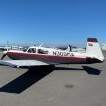Search the Community
Showing results for tags 'high altitude'.
-
Recently was talking to fellow turbo Mooney pilots installing Surefly units and evidently there is some discussion of the possibility of a high altitude arcing/misfire in the ignition harness cap... Supposedly there may be cases in Cirrus aircraft with an EIS installed of arcing in the cap. I've not heard of this before and I've only found a single thread here on MS regarding this. In speaking with Surefly, they mentioned using a high-altitude ignition harness, drilling a hole in the cap and attaching to upper deck pressure line from previous mag, or both to help prevent this. I'm curious how frequently this is an issue and at what altitudes it has been documented? I also couldn't find any information documenting Cirrus issues with this, but my understanding is that is where this was first mentioned/seen? Any direct experience with this or a solution looking for a problem?
-
Hi everyone, I'm new to the forum and settled on Mooney ownership, trying to decide between a J or K (252). I have read many other old forum posts on this topic, but I want to hear from you all who have flown both the J and K out in the mountainous areas west of Denver. I'm leaning in the direction of the turbo, but justifying the purchase and maintenance costs is making the decision a bit challenging. Just to be clear, I can definitely afford the K, but a wider dollar cushion is always nice to have. For clarity, I'm only considering the 252 variant of the K because I don't want to worry about the financial or mental workload of those premature high-altitude systems in the 231. Background: ATP and lifelong involvement in GA to at least some extent. Living in Flagstaff, AZ and based in Salt Lake City for work. The mission for the airplane would involved recreational cross country flights of 300NM or greater between four times per year and once per month. Using the airplane for commuting to work would be a desirable option, but not essential by any means. On the weekend trips most of the time we would be hauling just two people plus light bags. Occasionally a friend or family may join us. The vast majority of flying we would be doing would also be the most important stuff, flying down to lower elevation fields within the state of Arizona. No matter which type, night flying and approaches with ceilings below 1000 feet are no-go territory. Long story short; the main mission would be bumming around the "local" area for fun with about 30-40% serious, mountain-topping cross-country flying being a highly desirable option. My concerns with the J are performance above 15,000 feet and dispatch reliability given weather conditions. I like the systems simplicity and the associated lower burden of cost while enjoying the relative simplicity on fun-flying days. My concerns with the K are reliability, maintenance cost, the effect complex systems have on "fun factor" when hanging flying around the local area, and whether you all feel those are justified by any increased dispatch reliability. Thank you all for your responses, and stay safe up there! -Rich
- 35 replies
-
Those of you shuttling your families around, how do you handle O2 altitudes with little ones? Mine are 1.5 and 3 years old. We don't have supplemental O2 in our F but I am considering buying portable system. I don't think either of them would leave in the cannulas (3 year old maybe) long term. We like to fly 11-12,500 when the winds are favorable. Would like the option of climbing into the mid teens. The idea of my kids sleeping is certainly appealing on one level but the appeal fades when I consider that it would be from oxygen deprivation. Perhaps we just need to wait until they're both over 5 years of age? They often sleep above 10K as it is. Any thoughts on the wisdom of exposing them to legal, non O2 DA's that cause drowsiness?
- 17 replies
-
- high altitude
- oxygen
-
(and 2 more)
Tagged with:


